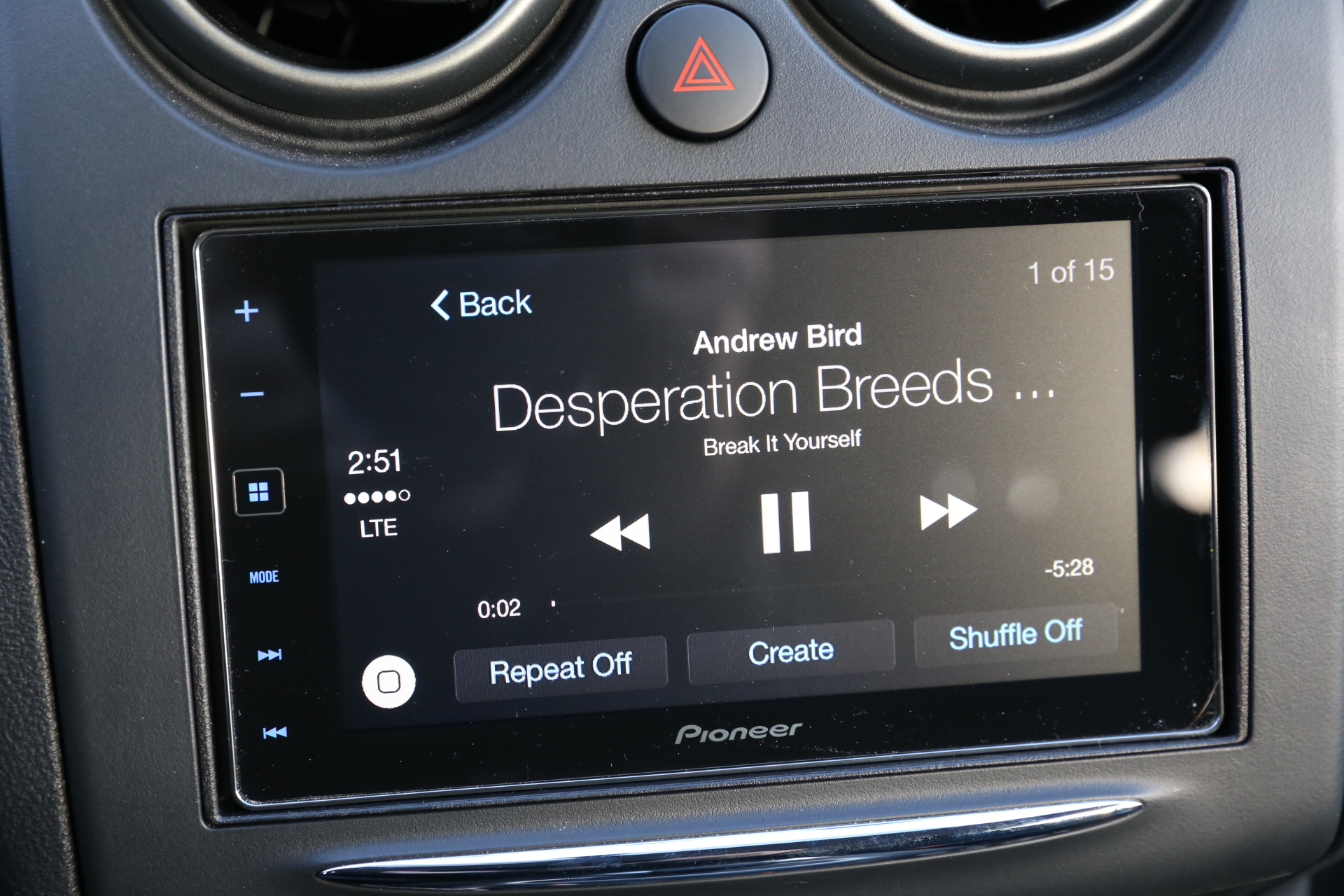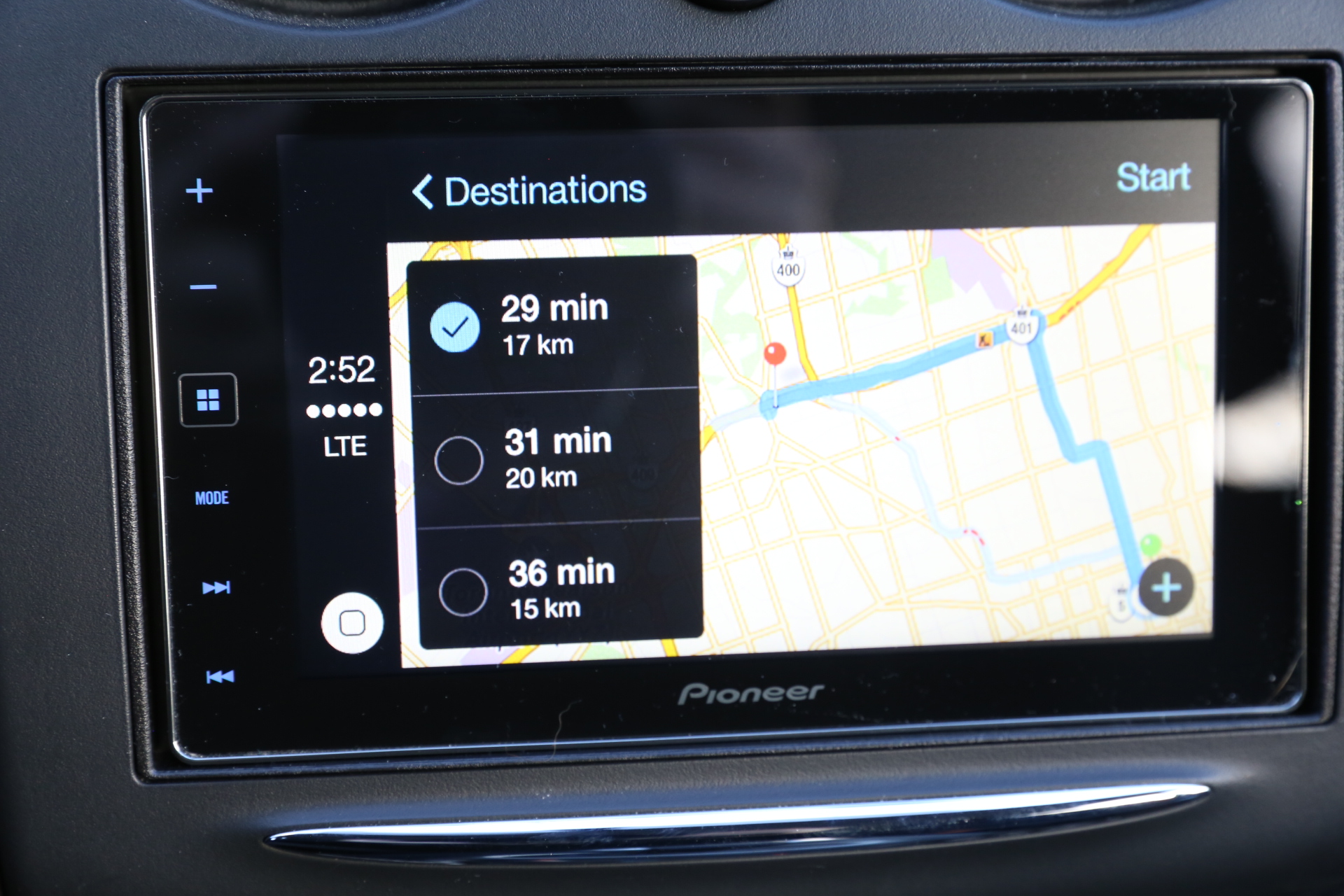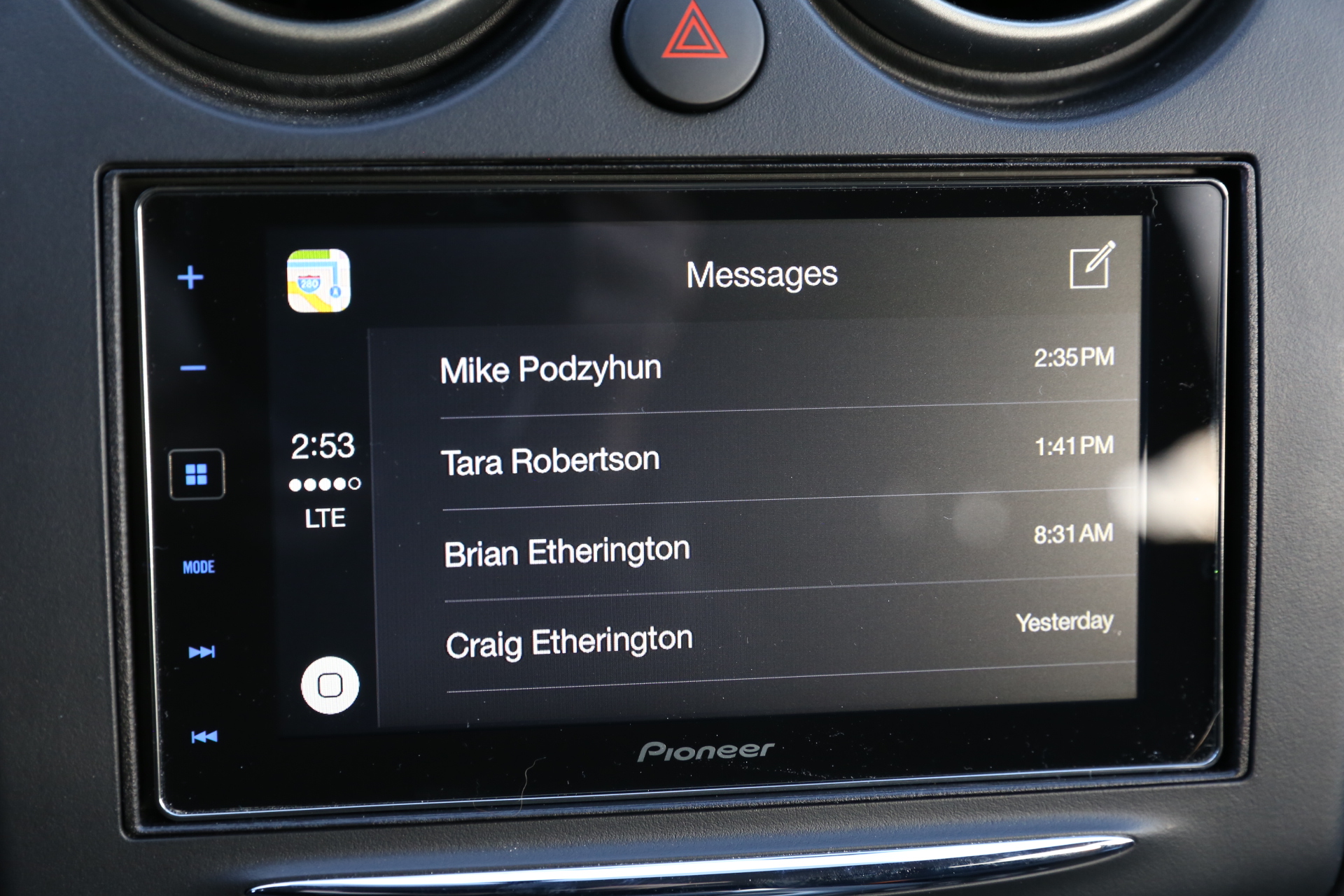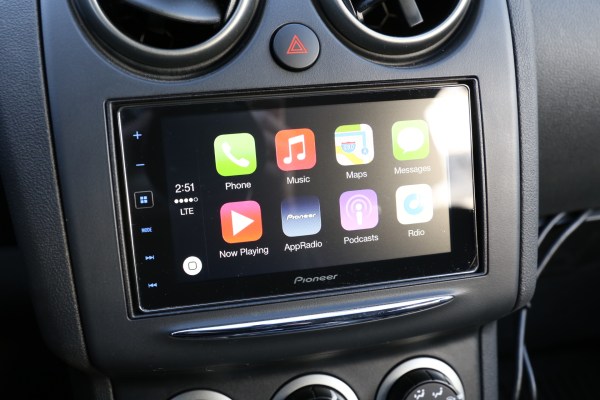If you want Apple’s CarPlay in-car smartphone system in your automobile, you can either buy a brand new car, or you can opt for one of the aftermarket solutions currently available. I opted for the Pioneer AppRadio 4, which supports CarPlay as well as Pioneer’s own software for use with iOS and Android devices, and which replaces your car’s stereo with a double DIN deck that houses a 6.2-inch capacitive touchscreen with Bluetooth audio streaming, FLAC support and more.
Video Review
Basics
- 6.2-inch, 800×480 display
- CarPlay
- Lightning, MHL MirrorLink, Bluetooth and HDMI input
- MSRP: $600 (plus cables and additional mounting adapters)
- Product info page
Pros
- CarPlay without a new car
- Also supports iOS screen mirroring to some extent
Cons
- CarPlay itself still has bugs
- AppRadio app features unimpressive
Design
The Pioneer AppRadio 4 will probably be an improvement on the design of your in-car head unit, despite the fact that it’s just basically a large touchscreen. There are keys along one side, but these are touch keys, and they look good, especially once you choose from some of the many selectable color backlight customization options to help them fit in with your existing steering wheel control and dash light hues.
[gallery ids="1089262,1089259,1089260,1089261,1089263,1089265,1089266,1089267,1089268,1089269"]
A caveat about design is that you ensure you have the right mounting kit for your vehicle – my base model 2013 Nissan Rogue has a fairly standard double DIN stereo compartment, which meant that even without a faceplate the AppRadio 4 looked pretty good, but with the correct model it was a lot more seamless.
Installing the AppRadio 4 is a complicated, involved process that also means having the right parts. I didn’t even attempt it myself – instead I headed over to Future Shop, where the Geek Squad auto accessory installation crew handled everything over the course of a couple of hours, including routing the correct Bluetooth controls from my steering wheel to the unit, and running the included Pioneer microphone up to an unobtrusive spot just above where my rear-view mirror hangs. Using Future Shop or other professional installation will cost you a fair amount on top of the radio, but it’s also pretty much headache-free, and you won’t have to worry about any sloppy design touches.
One caveat about design; everything depends on that touchscreen, and the interfaces thereupon. Mostly, Pioneer’s built-in interfaces display uninspiring visuals, with graphics that feel like they’ve been plucked from the 90s at a time when design was considered secondary. The low resolution display also isn’t great, but it works well enough when used with CarPlay, which also makes up a lot for the deficient design of the native interface with typical Apple sanity and simplicity.
Features
The big draw here is CarPlay, despite the fact that Pioneer’s AppRadio line has been around for four iterations now, boasting its own app to feed apps to the head unit’s touchscreen in specially reformatted versions designed for use in the car. CarPlay means that connecting an iOS 8 device that can run it (iPhone 5 or higher) automatically converts the unit to essentially a CarPlay system in its entirety – users can still employ AppRadio if they choose, but a number of apps are no longer compatible, and it requires connecting in a different way (via an Apple Lightning-to-HDMI) adapter.
CarPlay itself is reason enough for iOS users to be interested in the unit, however; the conversion is complete here, and you can call and interact with Siri via a couple different buttons on the head-unit, including the software home button, and the AppRadio 4 physical touch button that normally brings you to your primary dashboard.
If you get an adapter kit for your steering wheel controls, you can control volume and skip/rewind audio from your apps or stored on your device, too. I also found it very useful to be able to connect to other devices via Bluetooth, which allows for handsfree calling, as well as playback of audio from a source other than the phone connected via physical cable, which can be nice if you have a frequent passenger like a significant other who’d sometimes rather listen to their own music.

The ability to run Android apps via AppRadio software and MHL connectivity is also useful, but limited in terms of hardware compatibility. Also, the AppRadio app, on both iOS and Android, is desperately in need of a complete overhaul, both in terms of design and usability. Some enterprising individuals have taken it upon themselves to create software that allows you to transmit your Android device in its entirety to the display, but this requires rooting and costs around $30 regardless of which app you use, and it can be massively distracting.
Performance
The AppRadio 4 itself, despite some dated UI design and unimpressive companion apps, works solidly in terms of its basic functions. It also manages to make music sound a lot better, regardless of the source, and without even changing your stock speakers out for better ones. The difference from just switching the head unit out was amazing, and considering my Rogue didn’t support Bluetooth stereo audio streaming before the switch, but it did after, I’m very happy with the change even before considering any of the software features the AppRadio 4 also sports.
As far as CarPlay is concerned, performance was mostly in line with my expectations – albeit with some bugs that were clearly on the software side and that seem to be related to CarPlay itself. These included the occasional total failure of audio altogether, meaning despite the fact that music was shown as playing back in both Rdio and iTunes, no sound would come from the speakers. Audio from navigation and other sources worked, however, which is why I’m certain this wasn’t a hardware problem. Unplugging and plugging the phone back in (effectively rebooting CarPlay) resolved this the few times it did occur, however.

Otherwise, CarPlay worked well, providing easy navigation, and media playback through the handful of supported apps available currently. Apple Maps is still afflicted with the same problems it has on your iPhone, of course, which means it’s not as good about selecting an optimal route as Google, and on occasion it’ll get you near, but not entirely to your destination. The wider CarPlay rolls out, however, the greater the impetus on Apple to continue to improve Maps, so hopefully this will get better with time.
Using audio apps, including Podcasts, Music and Rdio with CarPlay is certainly a lot easier than using it on your device connecting via aux input to your car, and provides a lot fewer headaches in terms of most iOS inputs on older cars when it comes to cloud streaming services.
As for calls and texts, Siri handles them well, reading back content and recognizing speech-based input without error. I think she misinterpreted my commands and dictation maybe once during my entire usage, which spans at few weeks, and a lot of that credit should go not only to Siri itself, but to the microphone Pioneer supplies with the head unit, which also seems to produce good sound for those on the other end of the call. Call quality overall improved greatly compared to the built-in Bluetooth system that shipped with my Nissan Rogue. One thing I’d like from Apple is a way to more easily review recent, read messages from contacts, as checking your list just lets you compose new ones when you tap on your most recent inbound communications.
Bottom Line
The AppRadio 4 scratches a specific itch: the itch for CarPlay, right now, with the car you already have. It’s capacitive touchscreen means that it detects input effectively and reliably, and the Bluetooth audio streaming offers up a lot of benefit even if you’re uninterested in the rest of the software features, plus the hardware operates as a very capable head unit upgrade regardless of what else you’re doing with it.

That said, it’s expensive, it lacks a CD deck (which is a bonus for me, as I own probably two CDs total and they’re unopened), and the native AppRadio software is not wonderful. CarPlay, too, has some bugs that need fixing, and a limited software library as of right now, but it’s still very capable in its current iteration, and the best part of CarPlay’s entire premise is that it has lots of potential for future improvement. iOS updates, as well as app compatibility, should mean any CarPlay system investment is one that continues to pay dividends over the long term.
Pioneer’s AppRadio 4 is a solid upgrade for any older vehicle compared to most stock sound systems, and the smart features should give it more longevity than most other comparable products, albeit at a bit of a price premium.
